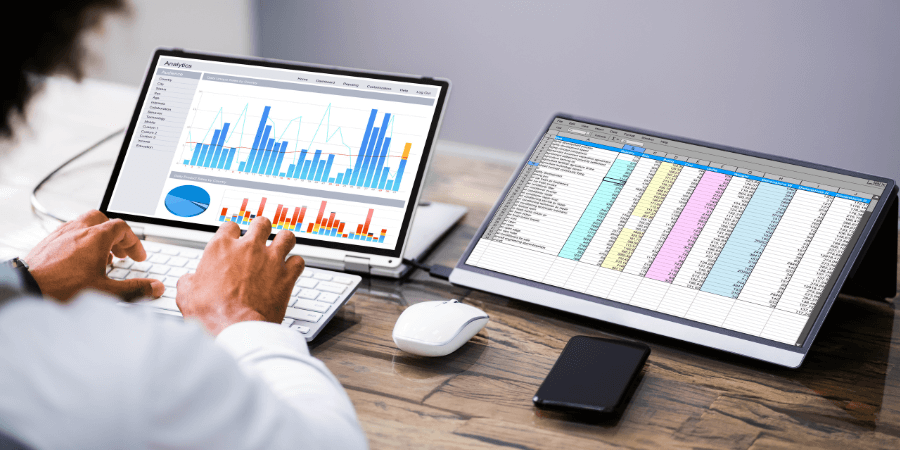
Data is knowledge, and knowledge is power. In the retail food industry, data helps manufacturers and retailers in understanding consumer behavior. This drives sound strategy development and smart decision-making.
Welcome to the first blog post in our three-part series about data-driven selling in the retail food industry. In this post, we highlight why it’s so important for food manufacturers to leverage data analytics to gain a competitive advantage when selling to retailers.
In 2023, the industry faces many unique and complicated situations. Using data as a way of understanding consumer behavior is more important now than ever before.
Current state of the retail food industry: High prices, decline in traffic and sales
In Q4 2022, most food retailers saw a decline in traffic and sales as compared to Q4 2021, according to data from Placer.ai. (However, it’s worth noting Q4 2022 levels hovered around pre-pandemic levels.)
Meanwhile, grocery costs in 2022 increased at an almost unprecedented rate. Prices for supermarket food rose 11.4% last year—and that’s after spikes of 3.5% in both 2020 and 2021.
Historically, a single major factor drives notable activity at grocery stores. For example, the COVID-19 pandemic or the housing crash of the late-2000s.
What’s unique about 2023, though, is that several major factors are impacting consumers, food retailers and food manufacturers. And understanding the factors at play are key to also understanding consumer behavior.
Factors impacting the retail food industry in 2023
Here are several major issues facing the retail food industry in the U.S. today.
Rampant inflation
At the end of August 2022, grocery price inflation hit a 43-year high, with U.S. retail food price inflation up 13.5% year over year. Many of the factors outlined below contribute to this high-inflation period.
Global supply chain issues
Supply chain and logistics problems around the world can drive up food prices. The issues could involve a shortage of truck drivers making deliveries or a shortage on plastic film for packaging food products.
War in Ukraine
The war in Ukraine has also disrupted the global food supply chain in the past year. The country has been challenged to export commodities like wheat and corn as efficiently, leading to higher food prices in the U.S.
Unpredictable weather
Extreme weather – much of it caused by the climate crisis – is also driving up the cost of food. Draughts, frost, extreme heat and other unpredictable weather patterns around the world have caused delayed planting, crop failure and increased farming expenses.
Disease
The Avian influenza virus outbreak in 2022 has affected the price of chicken and eggs. And since 2005, an insect-borne plant disease that impairs a tree’s ability to produce fruit and eventually kills it continues to reduce citrus yields in a number of states.
Workforce challenges
As in most industries, organizations in the food sector face challenges finding and retaining staff. Many workers left the workforce during the pandemic or shifted to other opportunities with better compensation. Now, the labor market is currently near a 50-year low.
Relatedly, rising wage demands also put pressure on food manufacturers’ and retailers’ margins. This, too, increases food prices at the grocery store.
The benefit of data: Understanding consumer behavior
Given the numerous factors impacting the food industry today, it’s more important than ever for food manufacturers to leverage data wisely. Understanding consumer behavior in the context of these varied challenges can help food manufacturers navigate these issues successfully.
Stay tuned for Part 2 and Part 3 in this blog series, where we’ll dive deeper into the types of data manufacturers should leverage – and how to get it.
Looking for a broker partner that can help you with understanding consumer behavior through data and analytics? Contact us today to learn more.
